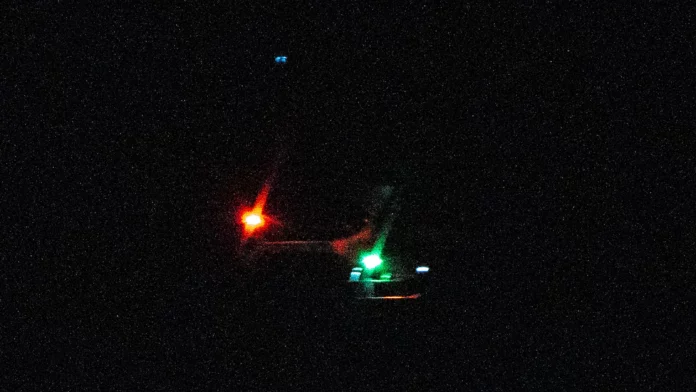
Three Key Insights
1. Flying Submarine Drones – A Dual-Front Threat: Transmedia vehicles capable of traveling underwater and in the air redefine traditional defense perimeters. These drones could surveil U.S. territories or deliver payloads with unprecedented stealth.
2. China’s Innovations Push the Boundaries: Chinese researchers have reportedly developed “transmedia vessels” capable of switching seamlessly between aquatic and aerial modes. This evolution could signal a new era of military competition.
3. American Countermeasures Underway: The U.S. Navy is also stepping up, deploying unmanned underwater vehicles (UUVs) with torpedo-tube launch-and-recovery systems. This advanced capability may be the key to countering these emerging threats.
By Samuel A. Lopez, USA Herald
[Washington, D.C.] — When reports first emerged in July 2022 about China allegedly developing a revolutionary “flying submarine” drone capable of penetrating aircraft carrier defenses, few could grasp the full implications of such a breakthrough. Now, with sightings of advanced drones in New Jersey airspace, we face an urgent question: Is this cutting-edge technology already operational, and what—if anything—can we do about it?
Imagine a world where the line between the sky and the sea blurs, where drones not only fly but dive beneath the waves, emerging to challenge the very concept of national security. This isn’t science fiction; this is today’s reality, and it’s possibly happening right over New Jersey and beyond.
The history of underwater drone technology dates back nearly a century. From Soviet student Boris Ushakov’s conceptual “submersible plane” in the 1920s to American defense contractor Donald Reid’s 1960s flying submarine, the idea of dual-medium vehicles has fascinated and challenged engineers. But it’s China’s recent advancements that are causing alarm.
The Backstory Unravels: Back in July 2022, whispers emerged of China developing a drone that could both fly and submerge, a chameleon of the deep and the sky. Interesting Engineering. Fast forward to 2024, and the U.S. Navy isn’t far behind, loading submarines with their own UUVs, aiming to deploy a groundbreaking torpedo-tube launch-and-recovery system which was scheduled to begin by year’s end. The National Interest.
According to Professor Ang Haisong of Nanjing University of Aeronautics and Astronautics, Chinese scientists have created drones that consume minimal energy while cruising in fixed-wing mode. These drones are capable of hovering underwater for extended periods or executing fast, long-range aerial missions. Other researchers report that these “transmedia vessels” are primarily for military use, and are allegedly capable of supersonic speeds.
Transmedia vessels are advanced drones or underwater vehicles that can operate in both air and water environments. https://www.eurasiantimes.com/china-unleashes-video-of-flying-submarines-beijing-wants-cross-media/
Essentially, these vessels can travel underwater and then transition to flying above the surface. This dual capability makes them particularly versatile and challenging to detect and defend against.
For example, a transmedia vessel can dive underwater to avoid radar detection, then resurface and take off to fly, allowing it to perform a variety of military and civilian tasks, such as reconnaissance, mine detection, and even carrying military ordinances.
The Present Dilemma: Now, we’re likely witnessing these drones, possibly a cocktail of both Chinese and American tech, in our skies. The implications are staggering. If these drones can evade detection, what’s to stop them from being weaponized or used for espionage over U.S. soil?
The Legal Conundrum: As a legal analyst, I see this not just as a technological race but as a legal quagmire. How do we address these incursions without escalating to conflict? The international laws of airspace and maritime territory are being tested like never before.
In 2022, China’s use of spy balloons over U.S. territory drew widespread criticism. Now, with flying submarines and transmedia vessels reportedly capable of infiltrating American airspace, the stakes have never been higher.
“Last year, it was Chinese spy balloons; today, it’s transmedia vessels… The escalation is evident.” – Samuel A. Lopez, Legal Analyst and Journalist, USA Herald
###
Learn More:
About Samuel A. Lopez
USA Herald


